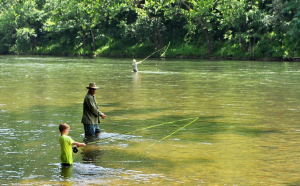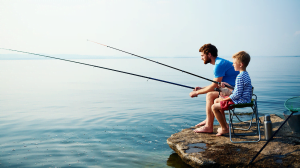 Fishing is one of the best outdoor activities for a variety of reasons. This ranges from training patience, bonding with family and friends, learning about environmental conservation, and more. Student fishing federations will come in handy and provide the necessary information, equipment, and materials.
Fishing is one of the best outdoor activities for a variety of reasons. This ranges from training patience, bonding with family and friends, learning about environmental conservation, and more. Student fishing federations will come in handy and provide the necessary information, equipment, and materials.
If you are considering picking up fishing as a hobby, ensure that you have a predetermined game plan, and type of fishing. More importantly, picking the best fishing spots will make fishing an exciting hobby.
The golden rule when picking a fishing spot is knowing which fish you want to catch. After this, you can now create a game plan. For example, if you are fishing for bass, a shallow cove will give you the best results.
Here are proven tips that will help you pick out the best fishing spots no matter where you live.
Research
This is the most crucial aspect when picking a fishing spot. Depending on where you live, these questions will help you in researching n the best places to fish:
- What season are you experiencing?
- What is the weather forecast for the day and the outlook for the week and month?
- What is the average temperature for the day you want to go fishing?
With the data on hand, determine how these factors will affect the behavior of the fish. All these factors will play a huge role in the spots you will choose. Moreover, you need to consult an experienced local fisherman or woman on the right conditions for fishing in the area.
Focusing on a specific type of fish will help you know the areas that you can find them. After this, you can then study the fish species, the weather, and the water body that has the fish you are after at that time of the year.
Scope the Area on Foot
 Before you get on the water, take a walk around the water body, taking note of the surroundings for signs that will help you with the endeavor. Preferably, it would help if you scoped the area a day before the fishing trip. This will give you an idea of the best places to start casting.
Before you get on the water, take a walk around the water body, taking note of the surroundings for signs that will help you with the endeavor. Preferably, it would help if you scoped the area a day before the fishing trip. This will give you an idea of the best places to start casting.
Please take note of the birds as they are most likely to be where the baitfish are in the water body. Moreover, you could use a variety of tools that come with a smartphone app, and this will help you scope the area. With the apps, you can get a good idea of:
- How deep the fish are in the water
- The bottom of the water body such as structures, contours, bottom handedness, and vegetation
- Depth and temperature of the water
When scoping the area, walk to the bank, scare the fish, and then you will know where they are hiding. However, when it comes to the actual fishing, stand a distance off the bank to avoid scaring the fish as they feed. Again, be as quiet as possible since fish can feel the vibrations in the water and bank.
Watch Out for Structures and Vegetation
Fish tend to hide in areas that have vegetation and permanent structures since they provide the perfect cover for feeding. The structures to target include:
- Docks, which provide the best cover for bass
- Ledges, which provide the perfect cover for freshwater fish such as Muskie or Walleye
- Laydowns, which are trees or logs lying in the water, and they provide excellent cover for fish to hide and wait for prey
With that said, the vegetation to look out for when scouting for a good fishing spot includes:
- Hydrilla, which is an invasive plant also known as bass magnet
- Lilly pads, whose leaves float on the surface
- Hyacinth, which is a free-floating weed that provides a good cover for bass
Fish will always hide under or in vegetation, and they are the perfect place to start if you are new to a fishing spot.
Temperature
By this stage, you already know the depth, the location of the baitfish, vegetation, among other features. However, the water temperature will affect the availability of fish at any particular time of the day.
Temperature and seasons change will affect the behavior of the fish. This is why we reiterate the importance of having a specific species in mind when going fishing. You will be able to predict how a rise or drop in temperature will affect their feeding habits and movement.
Conclusion
The rule of thumb when scouting for fishing spots is to identify the areas that provide cover for the fish to hide and feed. Look for signs of fish in the water, such as baitfish causing commotion in the water.
However, picking the right fishing spot should ensure that you are enjoying yourself since the fish will always be there. Outsource assignment writing services while you enjoy fishing as a hobby by yourself or with fellow students to ensure that you enjoy your activity without worrying too much about your assignments.

